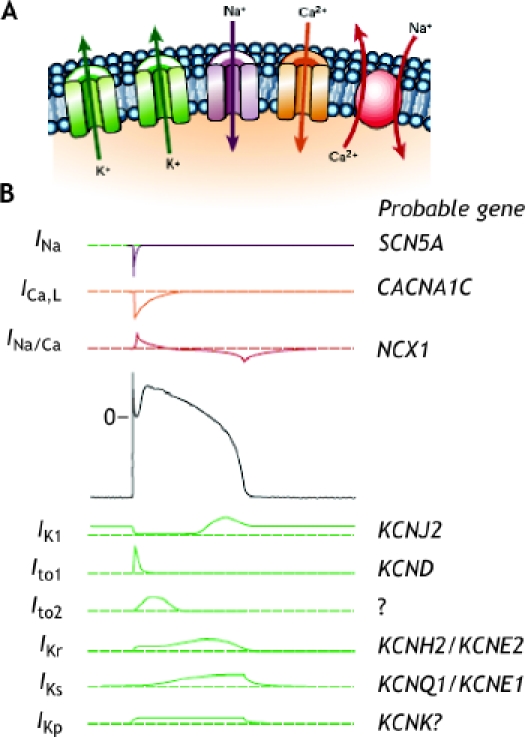
Fig. 1: A. Ion channels are embedded in the membrane and allow the flux of ions in and out of the cells following voltage gradients. The Na+/Ca2+ exchanger (red) is electrogenic, as it transports 3 sodium ions for each calcium ion across the surface membrane. B. Ionic currents and their corresponding genes; the generation of electrical activity by the different ionic currents will generate the cardiac action potential. Top: 3 depolarizing currents; centre: a ventricular action potential; bottom: repolarizing currents. Mutations in KCNJ2, which affects the IK1 current, result in the third form of short QT syndrome; mutations in KCNH2/KCNE2, affecting the IKr current, result in the syndrome's first form; mutations in KCNQ1/KCNE1, affecting the IKs current, result in the second form. Reprinted, with permission, from ref. 5.
